Learn How to Tie Fly Fishing Flies
Fly tying starts with the fundamentals and a tier builds on experience. Once a week, Gary Lewis writes a fly tying feature about a fly that he has fished at home or abroad. The fly tying features include fly tying patterns and instructions that show you how to tie fly fishing flies.
If you like fly tying and hand tied flies, or just want to pick the right dry fly for your next fishing trip, this is the place to be.
Types of Fly Fishing Flies
Dry Flies: Dry flies are the best choice when fish are feeding on the surface. This type of fishing fly is meant to be suggestive of an insect caught in the surface film. The idea is to have the artificial fly look like an insect that stays at the surface of the water. Many dry flies are intended to land softly, to drop onto the water like a surface insect.
Wet Flies: Wet flies are made to resemble insects that are under the surface of the water. Wet flies are sometimes meant to imitate a struggling aquatic insect trying to reach the surface of the water. As a general rule, wet flies are supposed to look like aquatic insects that are drowning or moving to the surface.
Nymphs: With nymphs, the angler is trying to imitate the underwater stage of surface insects. It is the stage where insects have just come out of the eggs. Nymphs are fished below the surface of the water. Most of a fish’s diet is taken below the surface of the water, making nymphs the best choice for most situations.
Streamer Flies: Streamer flies are meant to look like baitfish or other large aquatic prey. They are meant to imitate fresh or salt water baitfish. Streamer flies are larger as compared to other fly fishing flies and are meant to target larger, predatory fish.
Terrestrial Flies: Terrestrial flies imitate landborne insects like ants, grasshoppers, crickets and beetles. They can be used as dry or wet flies. Terrestrial flies imitate insects that are caught in the water or are struggling at the surface to get out of the water.
-
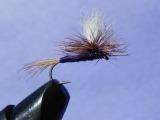
Para Wulff Purple
The Para Wulff Purple fly, also known as the Purple Haze dry fly or Purple Parachute Adams fly has the potential to become one of your favorite dry flies.
-
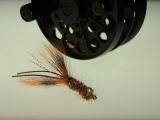
Flay's Cray
Flay’s Cray is a great crayfish imitation fly. A great pattern for smallmouth, trout, and carp.
-
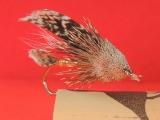
Muddler Minnow
The Muddler Minnow is one of the best-loved streamer flies of the last 50 years.
-
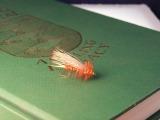
Schearer's Golden Stone
Look for golden Stones around late May and early June. Golden stones are a good bet when the big bugs are clinging to the tall grass along the river.
-
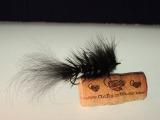
Black Metallic Bugger
Known as a 'go-to' fly. Buggers are one of the most versatile of patterns.
-
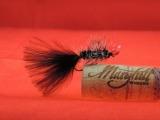
T-Tag Woolly Bugger
T-Tag Woolly Buggers give the illusion of a nasty little chub stealing a trout egg from a spawning redd.
-
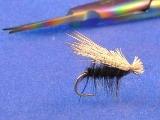
Black Elk Hair Caddis
The Elk Hair Caddis might just produce more trout than any other adult caddisfly imitation.
-
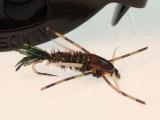
Double Bead Stone Peackock
The Double Bead Stone Peacock is a great pick for June, when stoneflies are on the move, but it can pay off throughout the year.
-
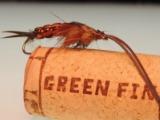
Pebble Bead Stonefly Nymph
The Pebble Bead Stonefly Nymph is a great choice for prospecting in the back eddies where trout watch the currents for their next morsel.
-
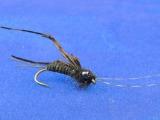
Iridescent Black Cricket
A great cricket pattern that can be used all summer long. Dead drift the Iridescent Black Cricket along grassy banks all the way till dark.
-
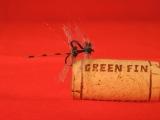
Paul's Horny Damsel
Watch for damselflies on the surface and when the trout start splashing, tie on Paul’s Horny Damsel.
-
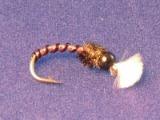
RBS Chironomid
The midge, or chironomid, is easily the most important trout food on most lakes.
-
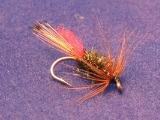
Ke He
A favorite simple prospecting pattern. A great fly for searching in still water, this pattern fishes best on a floating line and a fluorocarbon tippet.
-
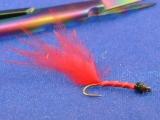
Bloodworm
When trout are feeding opportunistic high in the water column, they are vulnerable to a searching pattern like a Bloodworm.
-
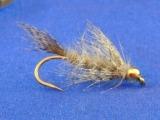
Gold Bead Shaggy Hare's Ear
The Hare's Ear is a favorite go-to trout catching fly.
-
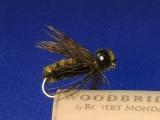
Dragonfly Nymph
When stillwater trout are keying on dry dragonflies, the action can be fast and frustrating. Instead of fishing dry, tie on a Dragonfly Nymph and work it with a long leader on a floating line.
-
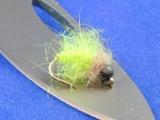
Beadhead Lime Green Sparkle Caddis
The Beadhead Lime Green Sparkle Caddis is a good stealth pattern for low water summer runs.
-
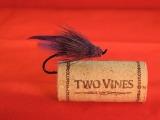
Purple Steelhead Muddler
The Steelhead Muddler can tease the fish up to the surface with a waking fly.
-
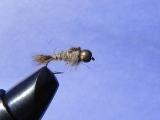
Hare's Ear
The Hare's Ear nymph can be effective when no other fly will work. A favorite nymph.
-
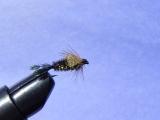
Zug Bug
The Zug Bug fly has been a strong choice for years. It imitates cased caddis and caddis larvae.


